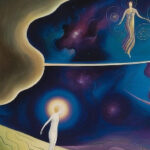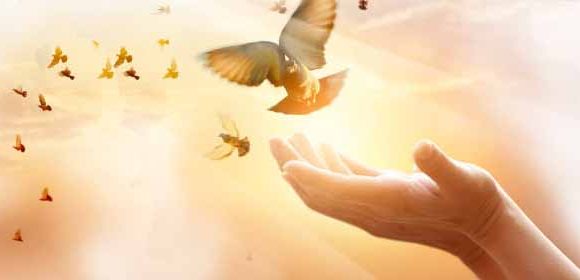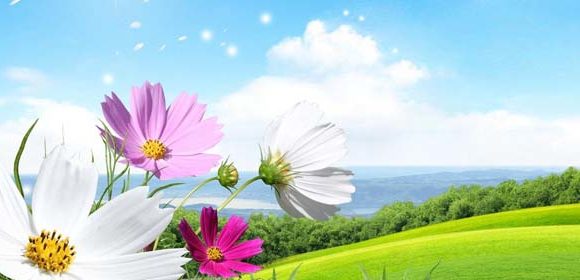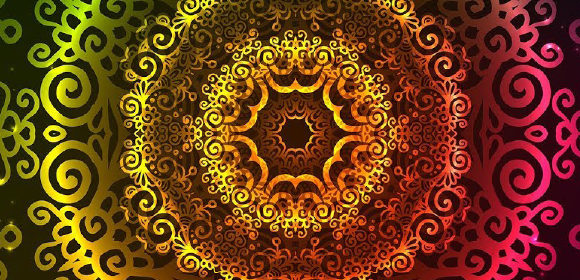What if the Earth isn’t just a rock spinning in space, but a living, conscious being? What if every tree, mountain, ocean, and gust of wind is part of a vast, intelligent organism we are intimately connected to? This is the essence of Gaia Consciousness—the idea that Earth is not just our home, but a sentient entity with whom we are in constant dialogue. Bridging ancient spiritual traditions like animism with modern science through Gaia Theory, this view invites a radical reimagining of our relationship to the planet, and to ourselves.
Gaia Theory: Science Meets Spirit
Gaia Theory, first proposed by atmospheric chemist James Lovelock in the 1970s, revolutionized how science viewed the planet. Rather than seeing Earth as a passive stage for life, Lovelock and his collaborator Lynn Margulis suggested that the biosphere actively regulates itself to sustain life—almost like a giant, self-aware organism. The name “Gaia” was inspired by the Greek goddess of the Earth, embodying the idea that the planet is alive in a very real and functional sense.
According to Gaia Theory, Earth’s systems—air, water, soil, and living organisms—interact in complex ways to maintain conditions favourable for life. For instance, the global temperature, atmospheric composition, and ocean salinity are not static accidents but results of feedback loops that resemble the functions of a living body maintaining homeostasis.
While the scientific community initially met the idea with scepticism, growing evidence in systems theory, climate science, and ecology has supported many of its foundational claims. More and more, science is beginning to echo what Indigenous cultures have known for millennia: the Earth is alive, interconnected, and conscious.
Animism: Ancestral Wisdom of a Living World
Long before Gaia Theory emerged, animism provided a spiritual framework for relating to the Earth as a sentient being. Found in Indigenous traditions across the world, animism holds that all elements of nature—rivers, rocks, animals, winds—possess consciousness or spirit. To an animist, the forest isn’t a resource; it’s a living relative. Mountains are elders, oceans are teachers, and every being has a role in the sacred web of life.
This worldview fosters a deep sense of respect, reciprocity, and kinship with the Earth. In animistic cultures, rituals of gratitude, offerings, and communication with the natural world are daily acts of relationship, not superstition. These traditions see the Earth not as separate from humanity, but as a co-creator of human existence, with whom we are in ongoing conversation.
The Call for Planetary Awakening
In today’s world of environmental crisis and climate collapse, the need for this planetary consciousness has never been more urgent. At the root of many global challenges lies a disconnection from the Earth—seeing her as an object to be exploited rather than a living being to be honoured. Gaia Consciousness offers not just a philosophy, but a way forward: healing our relationship with the Earth starts with recognizing her as alive, aware, and responsive.
This awakening is not just happening on a global scale; it’s happening within individuals. More people are reporting profound spiritual experiences in nature—moments of communion with the land, visions of Earth’s spirit, or deep emotional responses to ecological loss. These experiences point to a rising planetary awareness, a spiritual renaissance in which the Earth is not just seen, but felt.
Psychologist and eco-philosopher Joanna Macy calls this the “Great Turning”—a shift from industrial growth society to a life-sustaining civilization, rooted in compassion, sustainability, and deep ecology. At the heart of this transformation is the understanding that we are the Earth—not separate, but expressions of her intelligence.
Practices for Communing with the Living Earth
So how can we connect more deeply with Gaia consciousness in our daily lives? The path begins with attention, reverence, and intention. Here are a few practices to cultivate your relationship with the living Earth:
- Sit with Nature in Silence
Find a quiet spot in the forest, by the ocean, or in a park. Listen—not just with your ears, but with your whole body. Notice how the Earth communicates through sensation, intuition, and feeling.
- Offer Gratitude
Create a daily practice of thanking the Earth—whether through prayer, offerings, or simple words. Gratitude strengthens the bond between your spirit and the spirit of the land.
- Speak to the Elements
Talk to the trees, the wind, the river. You may feel silly at first, but many find that the Earth listens—and sometimes, she speaks back.
- Walk Barefoot
Earthing or grounding helps align your energy with Gaia’s frequencies. Walking barefoot on soil, sand, or grass can help you feel more connected and calm.
- Live in Reciprocity
Reduce harm where you can. Plant trees, support regenerative agriculture, conserve water, and minimize waste. These acts are not just eco-friendly—they’re part of a sacred relationship.
We Are Gaia
In truth, Gaia is not a separate being from us. We are her eyes, her hands, her voice. We are Earth becoming aware of itself. The breath we take is the breath of the forests. The blood in our veins carries the minerals of the soil. Our nervous systems resonate with the pulse of the planet.
To commune with Gaia is to awaken to our true identity—not as dominators of nature, but as children of the cosmos, partners in a living web of consciousness.
As we face the great challenges of our time, may we remember that healing the Earth begins by listening to her, honouring her, and remembering that she is alive—and so are we.







